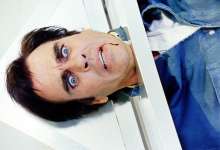- Images (1)
- Links (0)
- Agenda

|

|
In 1906 the Australian brothers John and Nevin Tait co-directed the first ever feature length narrative film The Story Of The Kelly Gang. The film told a popular story of Ned Kelly, the last Australian bushranger, using the classical dramatic narrative formula adapted from the theatre where the Taits had previously been working. Theirs was not the first narrative film, but the thought of a one storyline film taking place as the main attraction of the show, the feature, was unheard of at that time.
The Taits developed a way of adding footage to their film after its release, filming whole new scenes and gluing these to their screening print as a way to attract audiences to view the film more than one time, and as a way to gain publicity. When The Story Of The Kelly Gang was released, the film reel was 4000 feet long and it expanded over the years to over 6000 feet. As the film was a great financial success, other people soon started to make films about the Kelly Gang and the Taits’ version disappeared into historical oblivion. The last mention of a screening of it is from Warrangatta, Victoria in 1914. No print (or negative) survived at all until, in 1981, two boys playing in a landfill in Melbourne found a few shots of it, some badly decomposed.
Since then the Australian National Film and Sound Archive have been able to find a few more small fragments of the original film. With a surviving synopsis text, made for publicity by the Taits, we know something of what the original film looked like and the storyline it contained.
When I first read about The Story Of The Kelly Gang, I saw it as now being like a fossil – a casting of something that had been – but that has since disappeared. As an artist I could somehow re-cast it with the information that we have, like palaeontologists reconstruct creatures using a few crumbs of fossilised bone and other information gathered over the years.
One can say that every narrative feature film has been essentially the same since 1906 and the self-standardizing storyline has become a language in itself, which we expect to read in any sequence of moving images. In Just One Kiss-The Fall Of Ned Kelly I have attempted to invoke our interpretive faculties to construct this ‘meta’ story out of unrelated found footage images.
JUST ONE KISS- THE FALL OF NED KELLY is accompanied by live music – a different collaboration in each screening. After each screening a shot or scene is added to the original 4000 feet long 35mm screening print, as a way to follow the traces of the Taits’ film. Slowly, the story gets more diverse and epic, with no final version of it, but a series of projection events with different interpretations and an ever-expanding cinematic narrative.
Sami van Ingen
This screening will be accompanied by Jérôme Noetinger, Erik Minkkinen and Tommi Keränen.
| address |
Institut Finlandais 60 Rue des Ecoles (Métro Cluny - La Sorbonne) 75005 Paris France |
|---|---|
| lightcone@lightcone.org | |
| rates | single rate: 6.00 € |